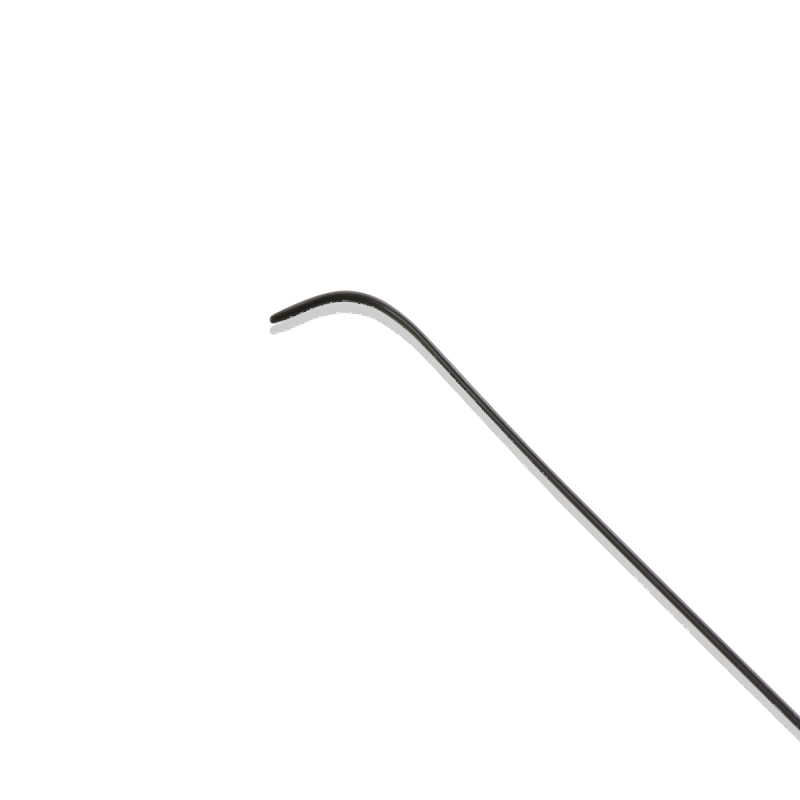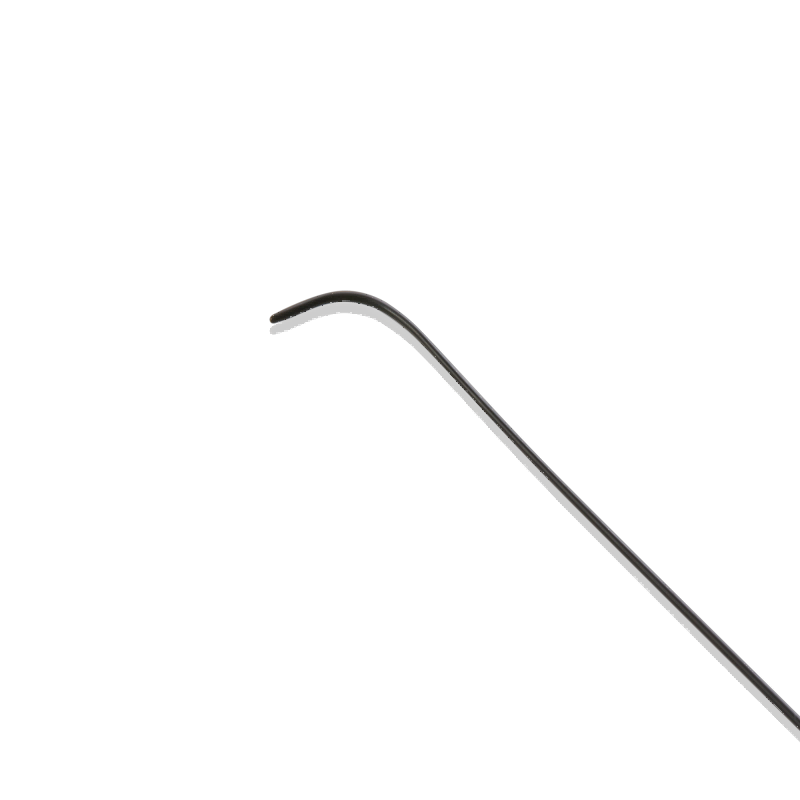A hydrophilic coated guidewire is a crucial tool in the field of interventional medicine, specifically designed to facilitate the navigation through the intricate and delicate pathways of blood vessels during procedures like angioplasty and stenting. The key feature of these guidewires is their water-attracting coating which significantly reduces friction, allowing for smoother insertion and maneuverability. This characteristic is especially beneficial in minimizing the risk of vascular damage during interventions. The evolution to hydrophilic guidewires marks a significant advancement in medical technology, offering enhanced safety and efficiency which are vital for successful outcomes in these critical procedures.

Characteristics and Composition of Hydrophilic Guidewires
Hydrophilic Coating: Composition and Purpose
Hydrophilic guidewires feature a coating designed to minimize friction and facilitate navigation within complex vascular systems. This coating typically consists of hydrophilic polymers such as polyvinylpyrrolidone (PVP) or polyethylene glycol (PEG). Once activated by moisture, these coatings create a slick surface that significantly decreases the resistance the guidewire encounters as it traverses blood vessels, thereby ensuring smoother and safer procedural outcomes.
Core Materials: Metals and Polymers
The structural integrity of hydrophilic guidewires is maintained by their core, commonly made from durable materials like stainless steel or nitinol. Stainless steel offers the necessary strength and rigidity needed during insertion, while nitinol provides unmatched flexibility and shape memory, allowing the guidewire to conform to the vascular pathways without kinking.
Flexibility, Trackability, and Torque Response
Essential attributes of hydrophilic guidewires include their flexibility, trackability, and torque response. These guidewires are finely tuned to offer optimal torque control, enabling precise directional changes that are faithfully transmitted from the operator to the guidewire tip. This precise maneuverability is critical for navigating through challenging and sensitive vascular territories, thus enhancing both the safety and effectiveness of medical interventions.
Applications in Interventional Procedures
A. Coronary Angiography and Angioplasty
Hydrophilic guidewires are indispensable in coronary angiography and angioplasty, where they guide catheters and stents to clear arterial blockages and restore myocardial blood flow. Their smooth surface reduces vascular trauma during navigation.
Peripheral Vascular Interventions
In peripheral vascular interventions aimed at treating conditions in non-coronary vessels, the superior maneuverability and reduced friction of hydrophilic guidewires prove essential, especially in navigating through narrow or twisted paths.
Neurovascular Interventions
During neurovascular interventions, the soft and non-traumatic nature of hydrophilic guidewires is crucial. Their ability to track through the delicate and intricate cerebral arteries minimizes risks and enhances the success rates of procedures aimed at preventing strokes.
Gastrointestinal Interventions
Hydrophilic guidewires also play a pivotal role in gastrointestinal interventions by improving the delivery and operation of endoscopic tools within the GI tract. Their lubricious coating helps reduce patient discomfort and procedural risks, facilitating both diagnostic and therapeutic gastrointestinal procedures.
Advantages of Demax Hydrophilic Guidewires
Hydrophilic Coating
Demax Hydrophilic Guidewires feature a state-of-the-art hydrophilic coating that rapidly activates upon contact with bodily fluids. This specialized coating enables the guidewire to glide through vascular structures with minimal friction, enhancing the ease and safety of navigation during interventional procedures.
High Flexibility
Constructed with a delicate balance of flexibility and structural support, these guidewires offer unparalleled maneuverability. This allows clinicians to adeptly navigate through complex and tortuous anatomy, ensuring precise interventions and improved clinical outcomes.
Radiopaque Marker
Each guidewire is equipped with a radiopaque marker at its distal end, providing exceptional visibility under fluoroscopic imaging. This feature is crucial for accurate placement, significantly reducing the risk of misplacement and the potential for procedural complications.
Multiple Length Options
To cater to a variety of clinical needs, Demax Hydrophilic Guidewires are available in multiple lengths. This versatility ensures that they can be effectively utilized in a wide range of medical procedures, accommodating the diverse anatomies and requirements of different patients.
Smooth Transition
The guidewire’s tapered tip is designed for smooth insertion, facilitating easy access to blood vessels and minimizing tissue trauma. This careful design helps to prevent vascular injuries, promoting safer procedures and enhancing patient comfort.
Enhanced Navigation through Tortuous Anatomy
The flexible nature of the guidewire coupled with its hydrophilic coating allows for improved navigation through the body’s natural twists and turns, reducing the effort needed to reach target areas.
Reduced Friction and Risk of Vascular Injury
By minimizing friction, these guidewires lessen the likelihood of damaging vascular walls, which is critical in preventing complications during and after procedures.
Improved Visibility under Fluoroscopy
The radiopaque marker ensures that clinicians can monitor the guidewire’s position continuously, enhancing procedural accuracy and safety.
Minimized Procedural Time and Radiation Exposure
Efficient navigation and visibility contribute to shorter procedure times and, consequently, reduced exposure to radiation for both patient and healthcare team.

Clinical Considerations and Challenges
Patient Selection Criteria
Selecting the appropriate patients for procedures using hydrophilic guidewires is crucial. Factors such as patient anatomy, vascular health, and the specific medical condition being addressed must be considered to optimize outcomes.
Handling and Storage Precautions
Proper handling and storage are vital to maintaining the integrity of the guidewires. Healthcare facilities must follow specific guidelines to ensure that the hydrophilic coating and overall functionality are preserved.
Cost-Effectiveness and Availability
While these guidewires offer numerous advantages, their cost-effectiveness is a consideration. Facilities must balance the benefits with the potential increased costs of using advanced technology like this.
Potential Complications and Adverse Effects
As with any medical device, there are risks of complications and adverse effects, such as vascular trauma or allergic reactions to the materials used in the guidewires.
Future Directions and Innovations
Development of Advanced Coatings and Materials
Ongoing research into new materials and coatings promises to further enhance the performance and safety of hydrophilic guidewires.
Integration with Imaging and Navigation Technologies
Future advancements may include better integration with imaging technologies, providing real-time feedback and guidance during procedures.
Personalized Guidewire Designs for Specific Interventions
Customization of guidewires for individual patient anatomy and specific clinical scenarios could revolutionize personalized interventional medicine.
Potential for Remote-Controlled or Robotic-Assisted Systems
Looking ahead, there is potential for developing remote-controlled or robotic-assisted guidewire systems, which could lead to even more precise and safer interventional procedures.
Final Words
Demax Hydrophilic Guidewires represent a significant advancement in the field of interventional medicine, offering enhanced navigational capabilities, reduced procedural risks, and improved clinical outcomes. Their specialized hydrophilic coating, combined with advanced design features such as radiopaque markers and multiple length options, ensures efficient and safe maneuvers through complex vascular systems. As technology progresses, the future of hydrophilic guidewires looks promising, with potential innovations in material science and integration with digital technologies poised to further refine the precision and effectiveness of these essential medical tools. Moving forward, the continued evolution of guidewire technology will undoubtedly play a critical role in advancing the standards of patient care in interventional procedures.
